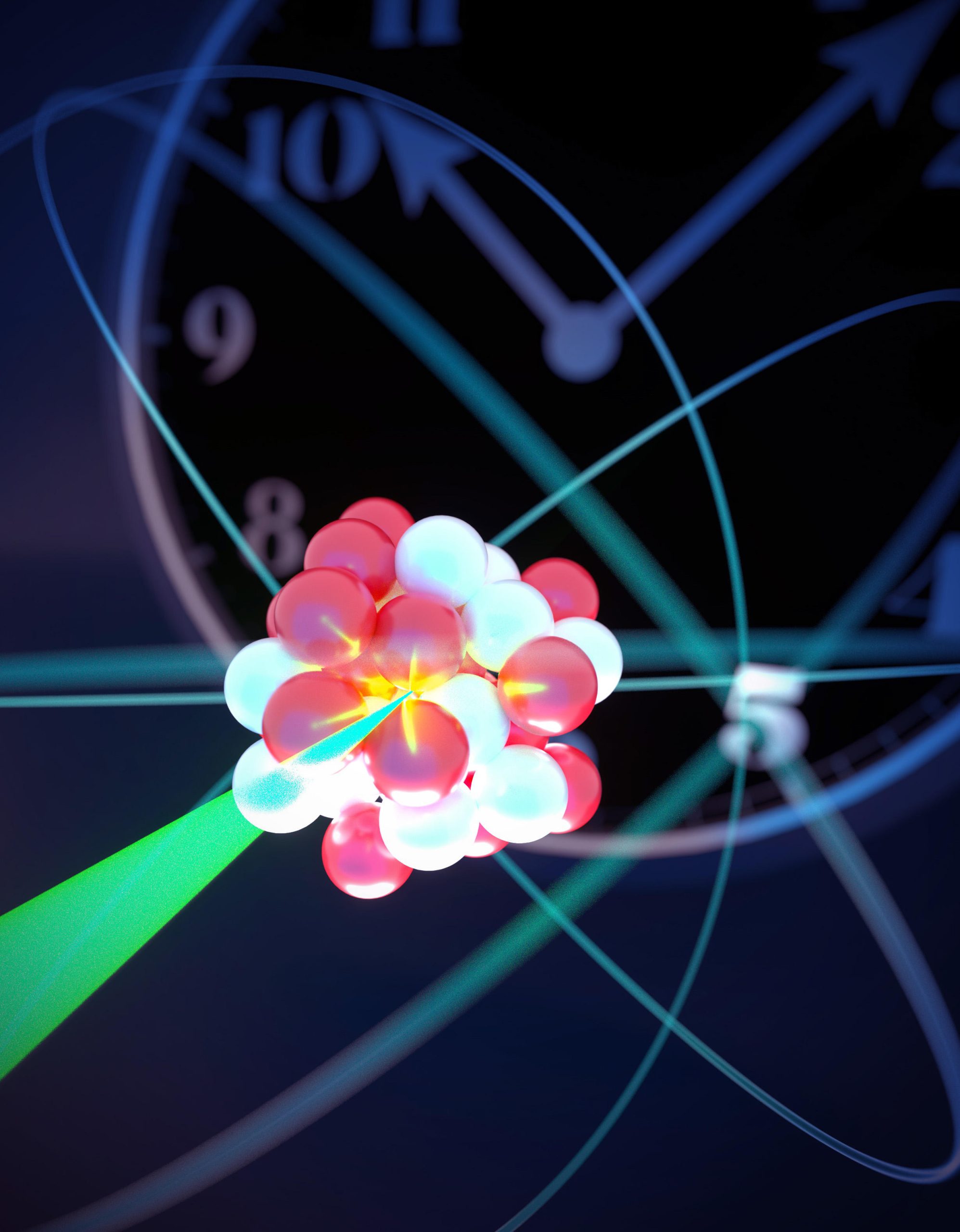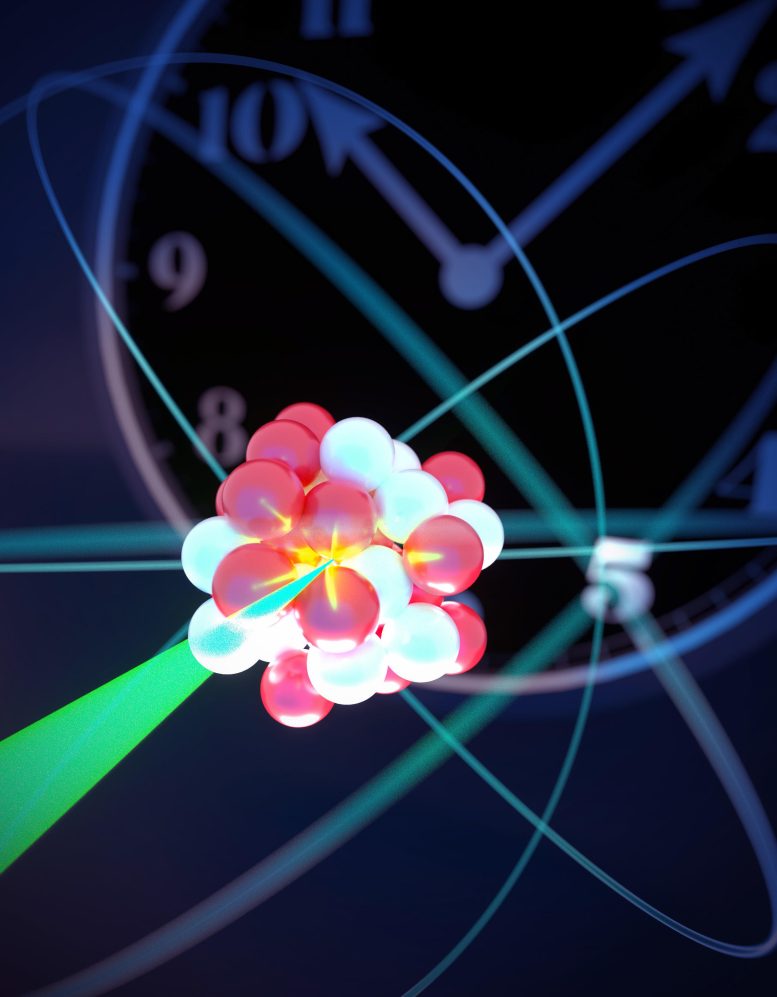Illustration of the laser interrogation of a highly charged ion clock (artwork). Credit: PTB
The scientists of the QUEST Institute at PTB have developed and tested a new type of optical atomic clock.
Highly charged ions are a form of matter that is commonly found in the cosmos, such as in the sun or other stars. They are called “highly charged” because they have lost many electrons and therefore have a strong positive charge.
As a result, the outermost electrons in highly charged ions are more strongly bound to the atomic nucleus than in neutral or weakly charged atoms. This makes highly charged ions less affected by external electromagnetic fields, but more sensitive to the fundamental effects of special relativity, quantum electrodynamics, and the atomic nucleus.
“Therefore, we expected that an optical atomic clock with highly charged ions would help us to better test these fundamental theories”, explains Physikalisch-Technische Bundesanstalt (PTB) physicist Lukas Spieß.
This hope has already been fulfilled: “We were able to detect the quantum electrodynamic nuclear recoil, an important theoretical prediction, in a five-electron system, which has not been achieved in any other experiment before.”
Beforehand, the team had to solve some fundamental problems, such as detection and cooling, in years of work: For atomic clocks, one has to cool the particles down extremely in order to stop them as much as possible and thus read out their frequency at rest. Highly charged ions, however, are produced by creating an extremely hot DOI: 10.1038/s41586-022-05245-4











